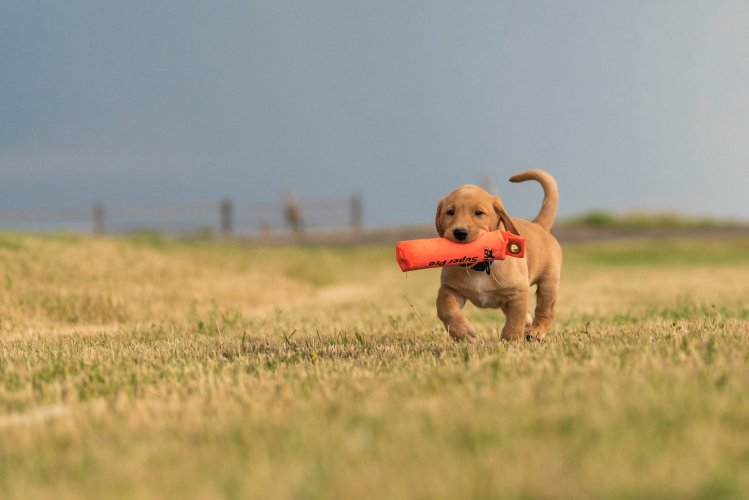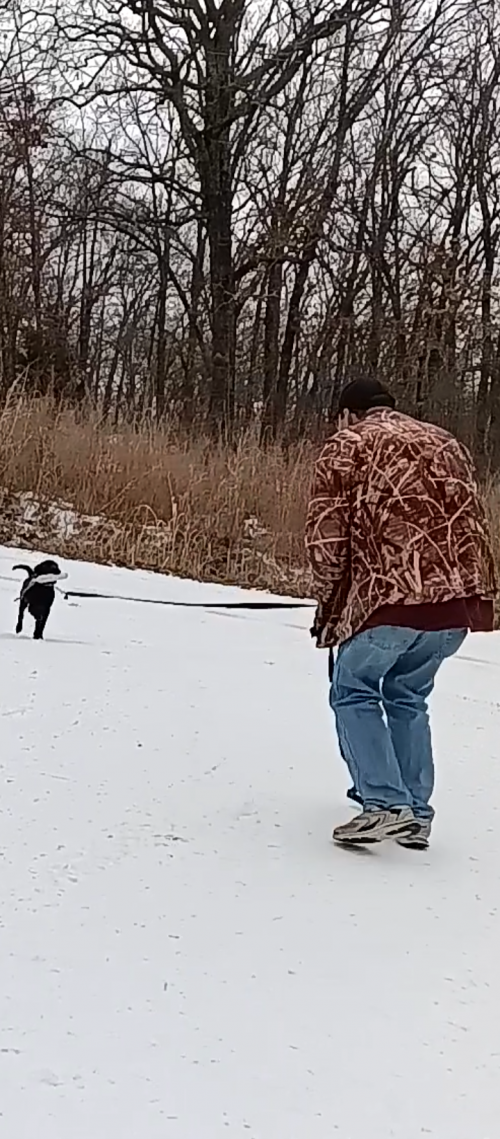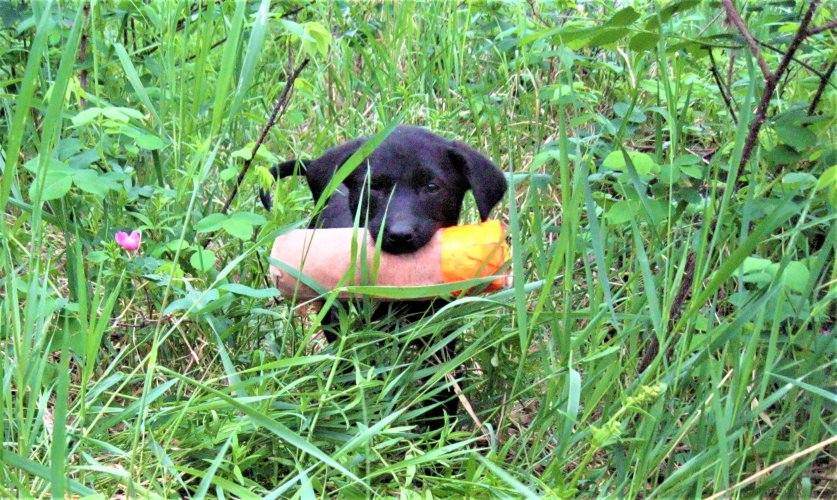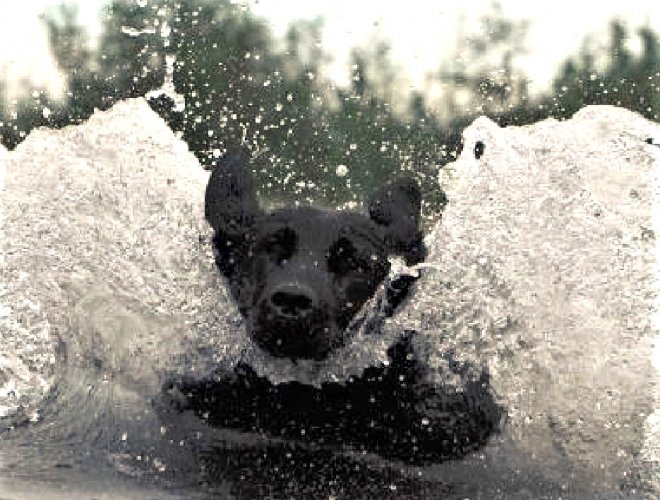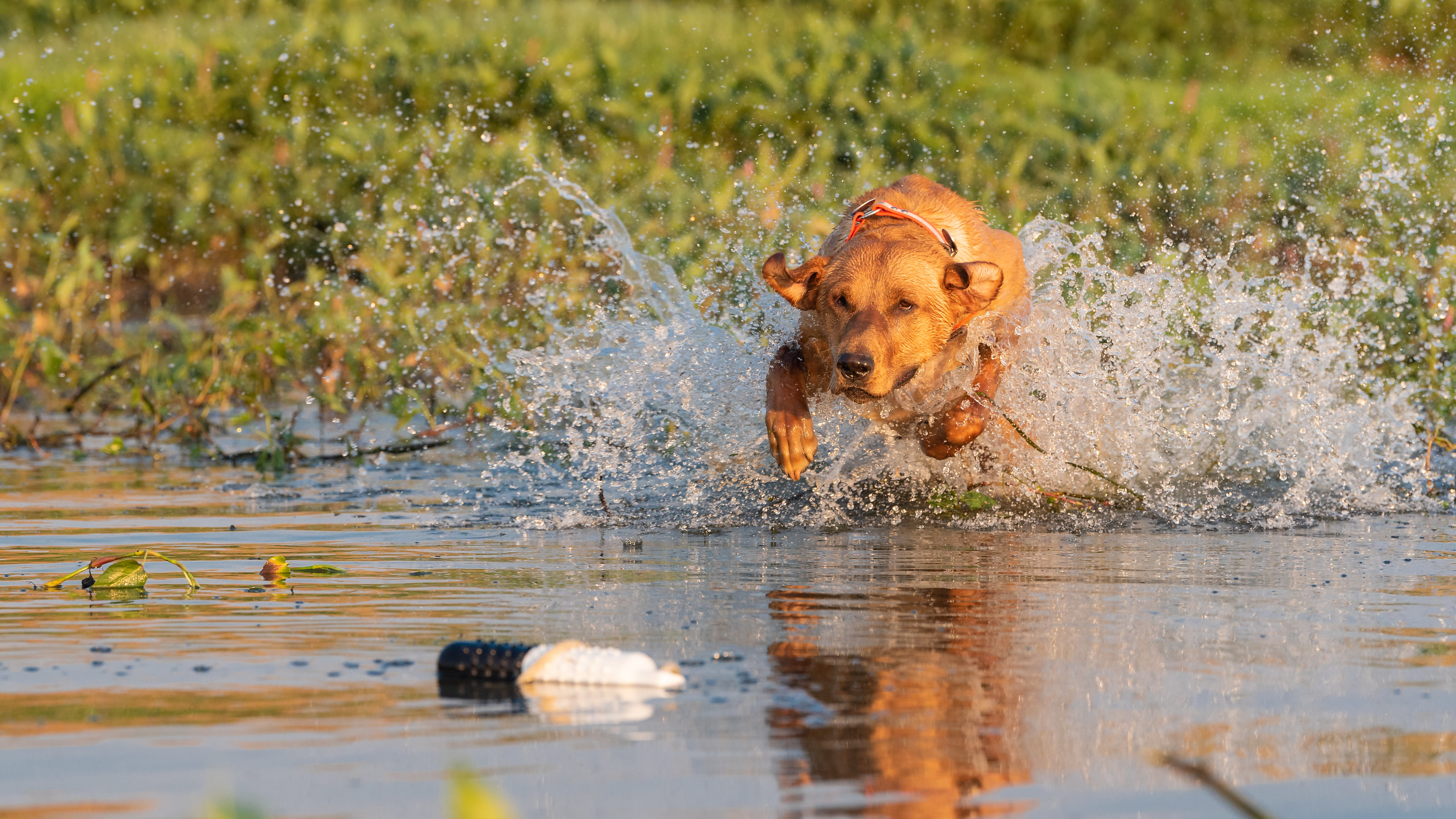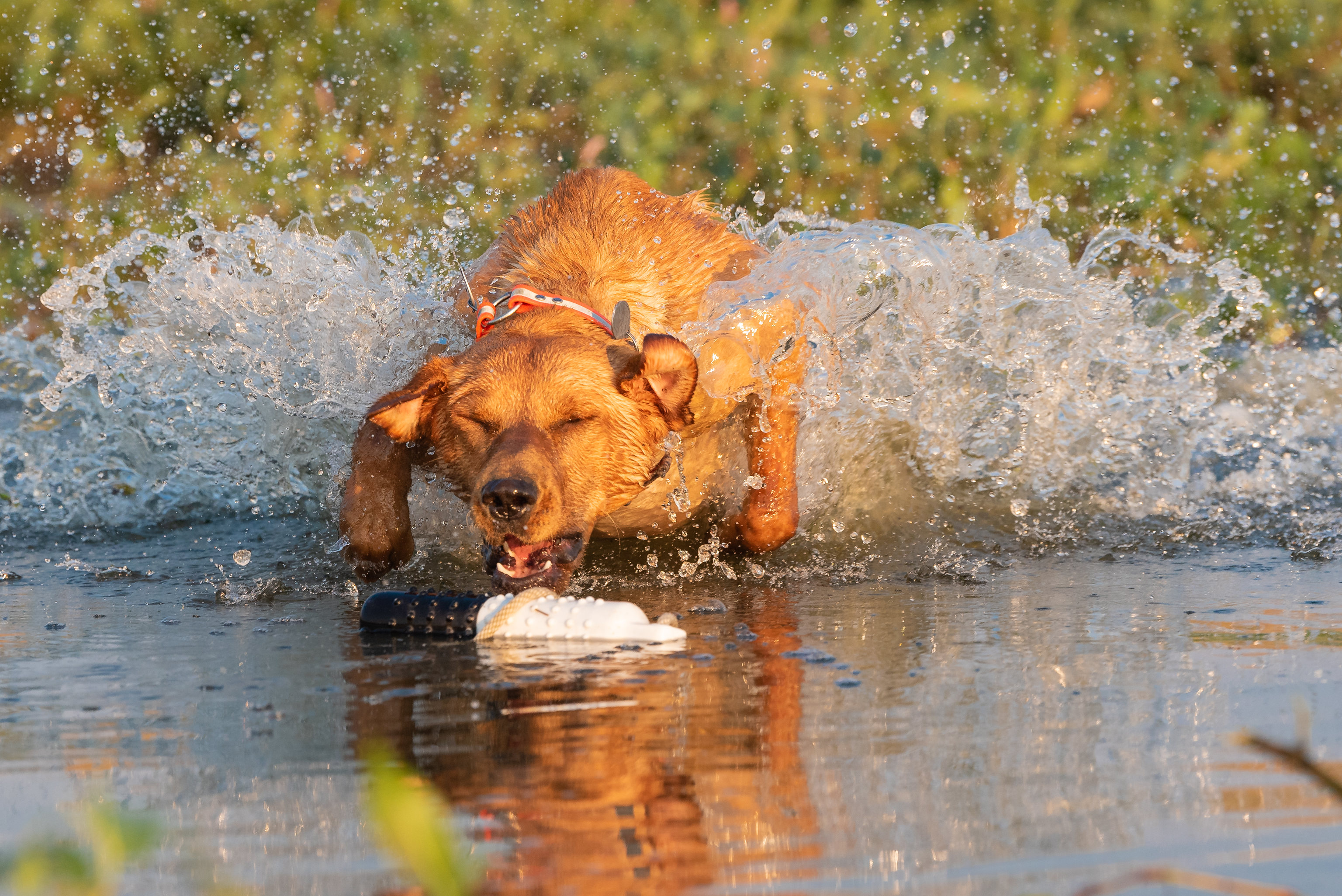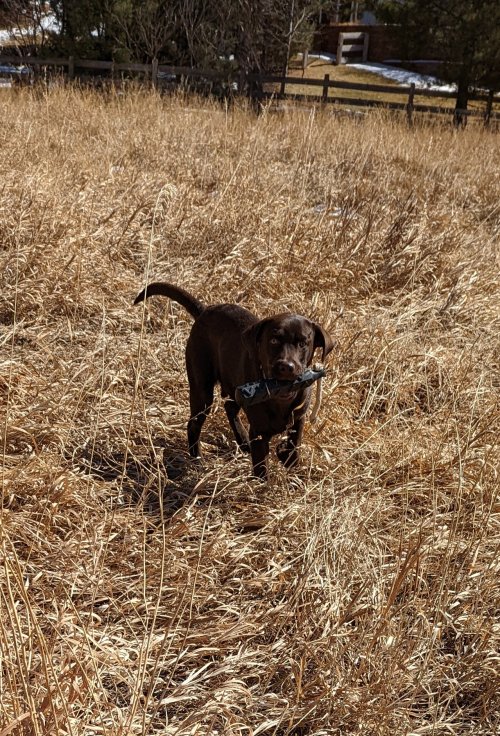AlaskaHunter
Well-known member
Bumpers...They typically will last for many years. Plastic or canvas, orange, white or black & white?
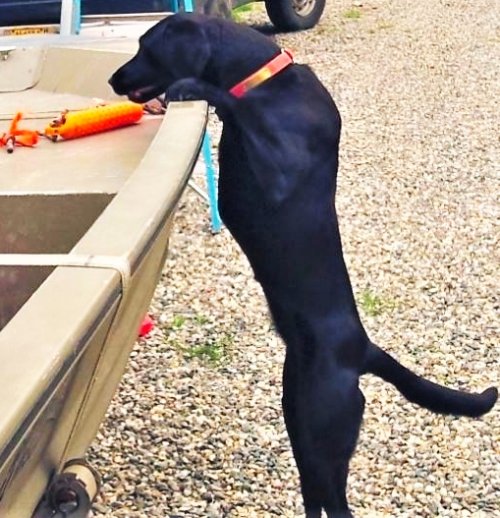
Here are some thoughts on bumpers.
I like canvas for quick training sessions in the yard when its super cold up here in Alaska. The canvas bumpers are warm from being inside and I think are a better reward than plastic bumpers that can quickly cool to below freezing. An alternative to canvas for winter training is to encase plastic bumpers with thick black socks. But canvas bumpers do shed snow more easily than the black socks trick.
A couple disadvantages of canvas are they get muddy with water training and they are typically more expensive than plastic bumpers.
Plastic bumpers and Blind Retrieve Training.
Canines have di-chromatic vision so they do not perceive orange as well as humans. We use plastic orange bumpers for blinds because we want to develop a heads-up run to the end of the field attitude. With white bumpers, a youngster may be confused the first time he runs a water blind in a pond full of white water lilly pad blossoms or a field with white rocks. 2 inch bumpers work well as they are less expensive and easier to transport compared to lots of 3 inch orange bumpers.
We typically don't use birds in blind because we don't want drag-back scent which would promote a youngster to go into "hunt mode" instead of thinking run long to a distant destination at the end of the field.
Also it is easier to see a orange floating bumper in weedy water so the handler sometimes knows the exact line to the blind.
If I want instant success at the end of the water blind with a youngster, I will use a big 3 inch orange bumper floating in weedy water. I also like 3 inch orange bumpers for walking baseball where the handler needs to know the exact location of several bumpers and casts are typically long.
Marks.
Our club typically uses dead ducks for marks in group training because they are a better canine reward than bumpers. For youngsters, I like to run last so there is lots of duck scent in the area of the fall from previous throws...that way when the youngster achieves the area of the fall, lots of duck scent to keep him persistently hunting until success. For youngsters we also typically walk up closer to the thrower so the retriever learns to focus and run to the mark location and not to simply run to the thrower and hunt.
The biggest problem with birds is expense...they cost over $30 per frozen duck up here in Alaska. So we typically use-freeze-reuse many times and a duck can last for many training sessions if wrapped in newspaper before freezing and used in land marks. I use a cardboard beer 12-pack box which fits 4 ducks perfectly. That way they stack nicely in the freezer and a quick count of cardboard boxes times 4 = total ducks left.
On non-club training days, we typically use black & white bumpers for marks because the black portion contrasts with the bright sky while the white portion contrasts with the dark forest backgrounds. 2 inch bumpers work fine.
For super long marks we typically use 3 inch black & white bumpers with black & white ribbons that flutter as the bumper is falling. For super long marks, when the challenge is the line getting to the area of the fall, we will sometimes "salt" the area of the fall by pre-planting several bumpers in the area. That way when the retriever gets to the destination there is quick success in finding a bumper.
To help teach a retriever not to head swing to a shorter thrower, we often will have the super long thrower throw a mark, and at the handlers hand signal repeat throwing a second bumper to the same area of the fall. That promotes focus on that super long thrower instead of head-swinging to the next shorter thrower.
I will use an orange bumper for a very short "check-down" mark where the lesson is to hunt carefully and with great persistence.

Here are some thoughts on bumpers.
I like canvas for quick training sessions in the yard when its super cold up here in Alaska. The canvas bumpers are warm from being inside and I think are a better reward than plastic bumpers that can quickly cool to below freezing. An alternative to canvas for winter training is to encase plastic bumpers with thick black socks. But canvas bumpers do shed snow more easily than the black socks trick.
A couple disadvantages of canvas are they get muddy with water training and they are typically more expensive than plastic bumpers.
Plastic bumpers and Blind Retrieve Training.
Canines have di-chromatic vision so they do not perceive orange as well as humans. We use plastic orange bumpers for blinds because we want to develop a heads-up run to the end of the field attitude. With white bumpers, a youngster may be confused the first time he runs a water blind in a pond full of white water lilly pad blossoms or a field with white rocks. 2 inch bumpers work well as they are less expensive and easier to transport compared to lots of 3 inch orange bumpers.
We typically don't use birds in blind because we don't want drag-back scent which would promote a youngster to go into "hunt mode" instead of thinking run long to a distant destination at the end of the field.
Also it is easier to see a orange floating bumper in weedy water so the handler sometimes knows the exact line to the blind.
If I want instant success at the end of the water blind with a youngster, I will use a big 3 inch orange bumper floating in weedy water. I also like 3 inch orange bumpers for walking baseball where the handler needs to know the exact location of several bumpers and casts are typically long.
Marks.
Our club typically uses dead ducks for marks in group training because they are a better canine reward than bumpers. For youngsters, I like to run last so there is lots of duck scent in the area of the fall from previous throws...that way when the youngster achieves the area of the fall, lots of duck scent to keep him persistently hunting until success. For youngsters we also typically walk up closer to the thrower so the retriever learns to focus and run to the mark location and not to simply run to the thrower and hunt.
The biggest problem with birds is expense...they cost over $30 per frozen duck up here in Alaska. So we typically use-freeze-reuse many times and a duck can last for many training sessions if wrapped in newspaper before freezing and used in land marks. I use a cardboard beer 12-pack box which fits 4 ducks perfectly. That way they stack nicely in the freezer and a quick count of cardboard boxes times 4 = total ducks left.
On non-club training days, we typically use black & white bumpers for marks because the black portion contrasts with the bright sky while the white portion contrasts with the dark forest backgrounds. 2 inch bumpers work fine.
For super long marks we typically use 3 inch black & white bumpers with black & white ribbons that flutter as the bumper is falling. For super long marks, when the challenge is the line getting to the area of the fall, we will sometimes "salt" the area of the fall by pre-planting several bumpers in the area. That way when the retriever gets to the destination there is quick success in finding a bumper.
To help teach a retriever not to head swing to a shorter thrower, we often will have the super long thrower throw a mark, and at the handlers hand signal repeat throwing a second bumper to the same area of the fall. That promotes focus on that super long thrower instead of head-swinging to the next shorter thrower.
I will use an orange bumper for a very short "check-down" mark where the lesson is to hunt carefully and with great persistence.




